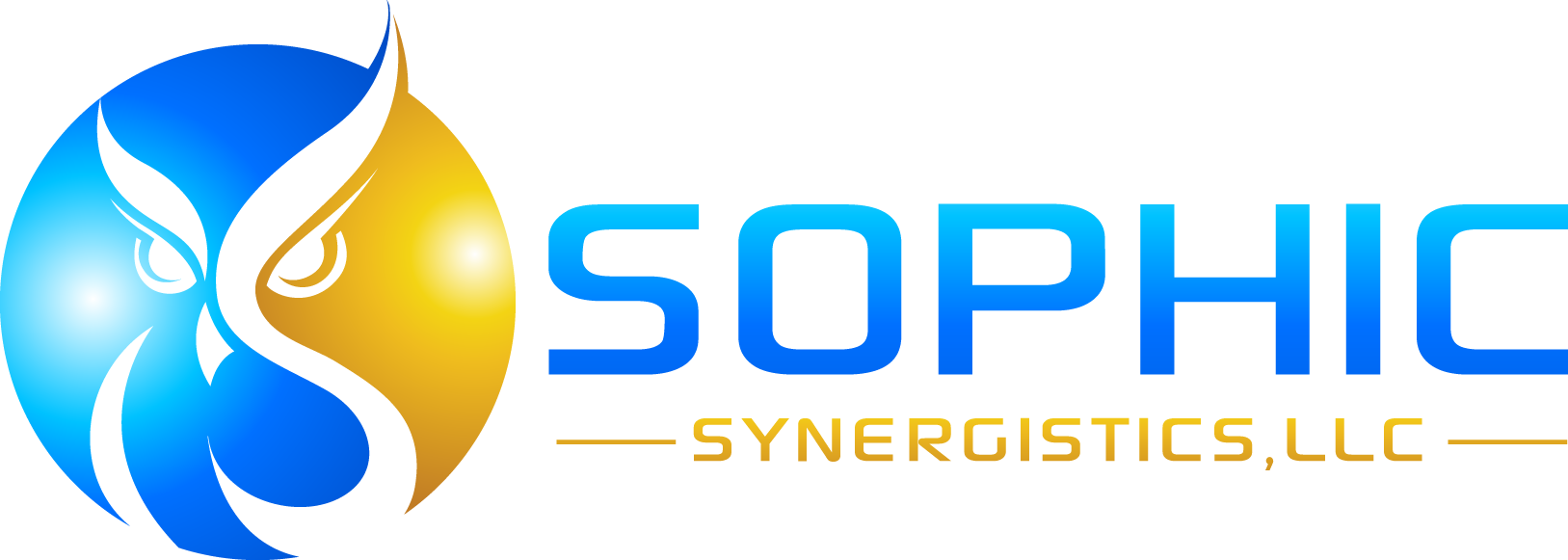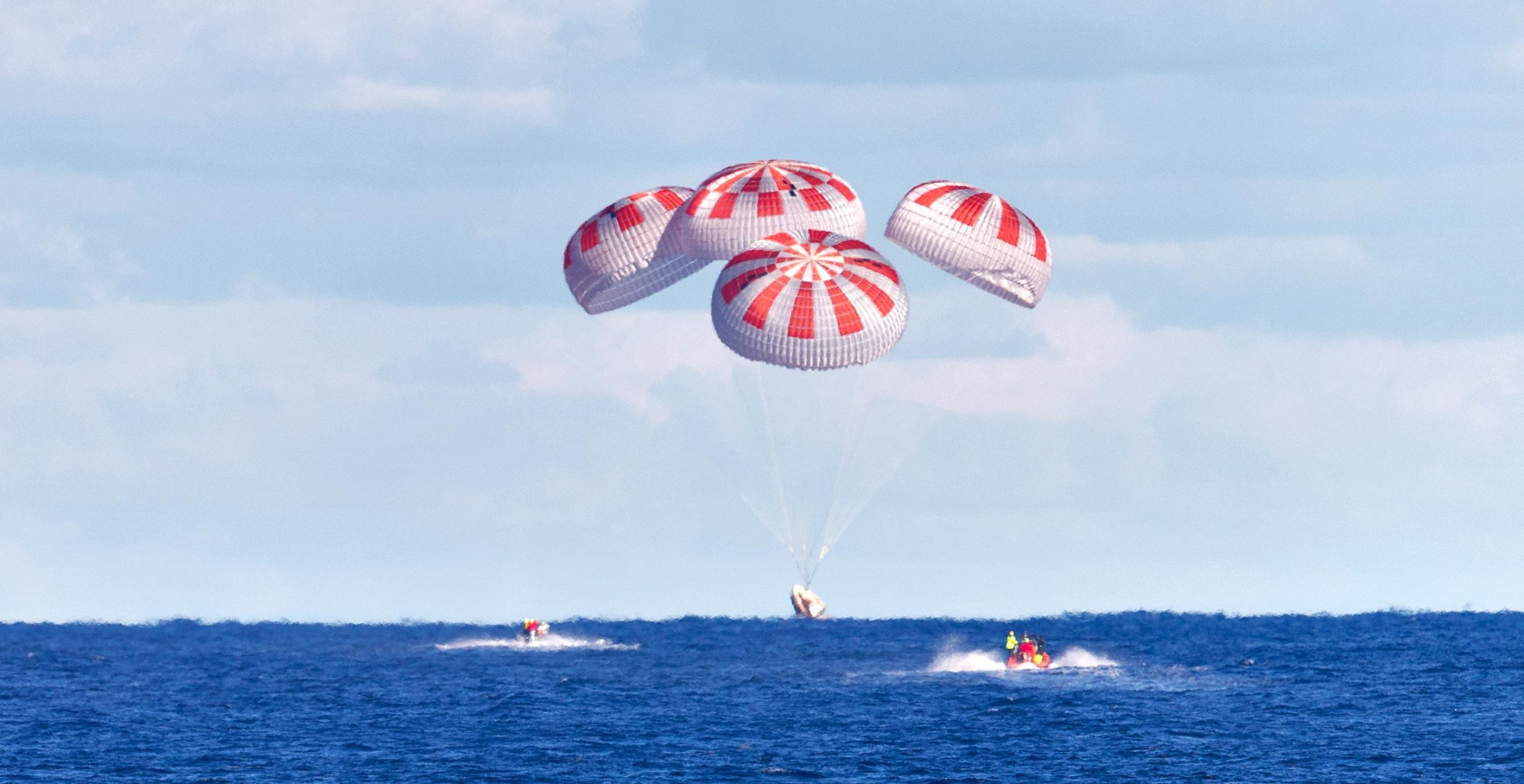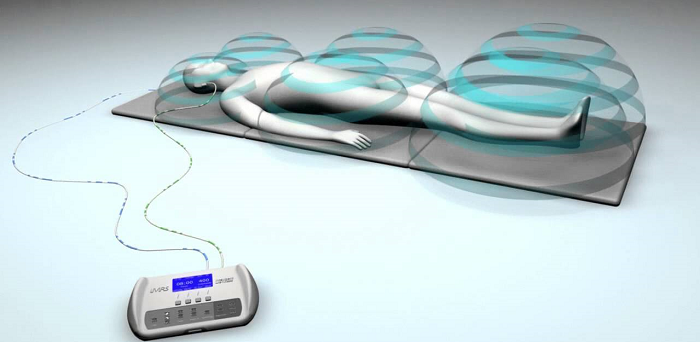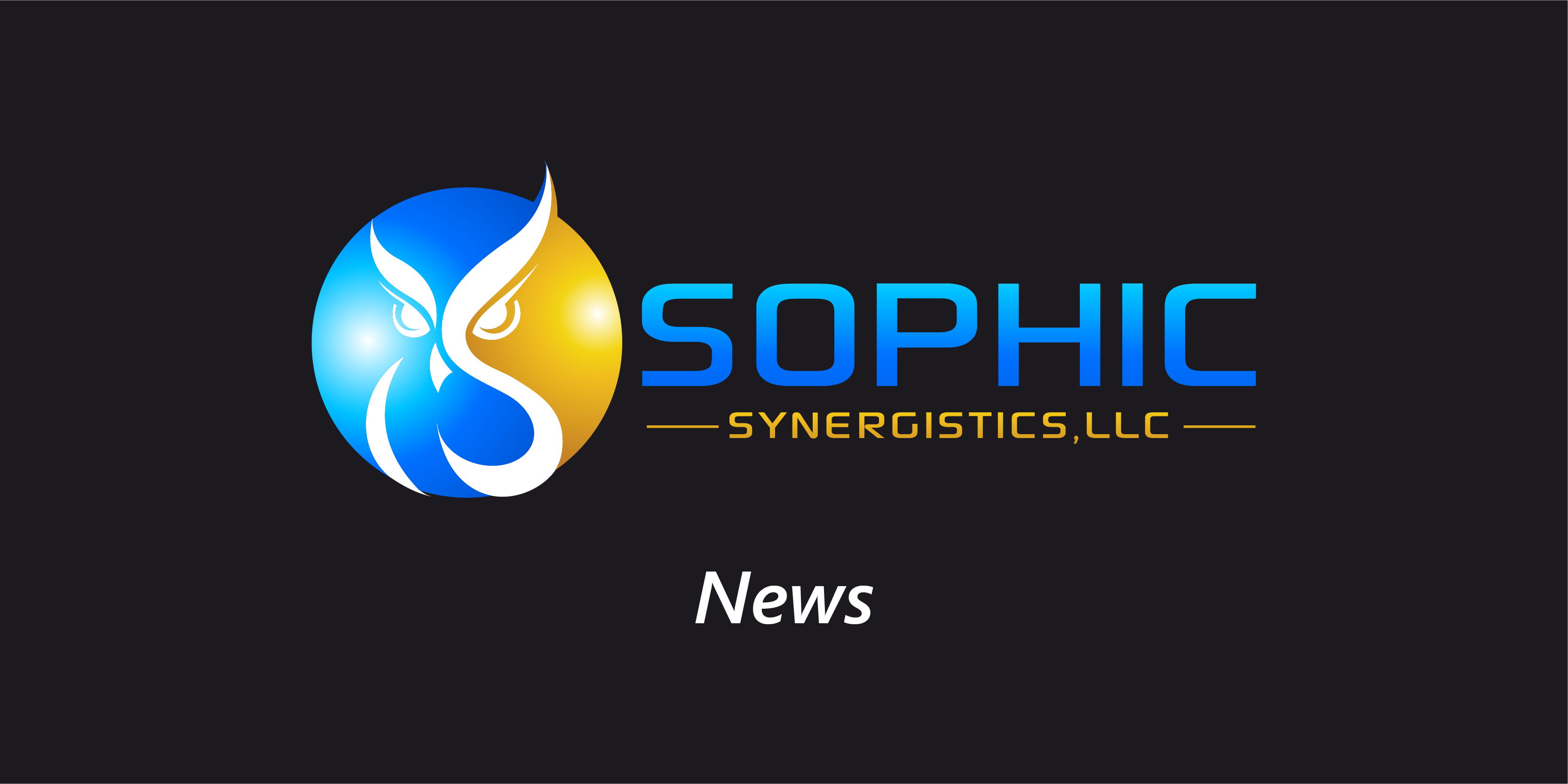The successful return of Dragon Endeavor marks the first U.S. splashdown in over 4 decades since the Apollo program. This has been a monumental feat, for both commercial contractors and the nation, as it is also the first vehicle to launch from U.S. soil in 9 years, since the retirement of Shuttle.
Dragon 2 has demonstrated first of its kind capabilities in space exploration, including fully autonomous operations and interface upgrades. The SpaceX vehicle made its debut crewed flight on May 30, 2020, launching into orbit by the Falcon 9 (a reusable self-landing rocket). After astronauts Doug Hurley and Bob Behnken had an eventful visit collaborating with their fellow crewmembers, Dragon Endeavor made a successful splashdown on August 3, 2020 – 64 days after departure. This maiden voyage has brought to the forefront the hard work that was essential to make this a reality.
Interface Upgrades
The Dragon 2 command module interfaces have experienced significant changes when compared to the control systems of past space vehicles. Setting the standard for future commercially built spacecraft, SpaceX has implemented a full complement of touchscreen displays. While touchscreens may be common place here on Earth, it is an immense advancement for spaceflight control systems due to the inherent risks the environment imposes to technology. The potential impacts of vibration and microgravity are a leading reason why past systems employed primarily manual controls. After years of space flight experience and the ability to have a continuous presence on the International Space Station (ISS), we have gained the ability to test these impacts and limits on technology. Leading the way to significant changes in technology advancement and integration for new space vehicles and systems.
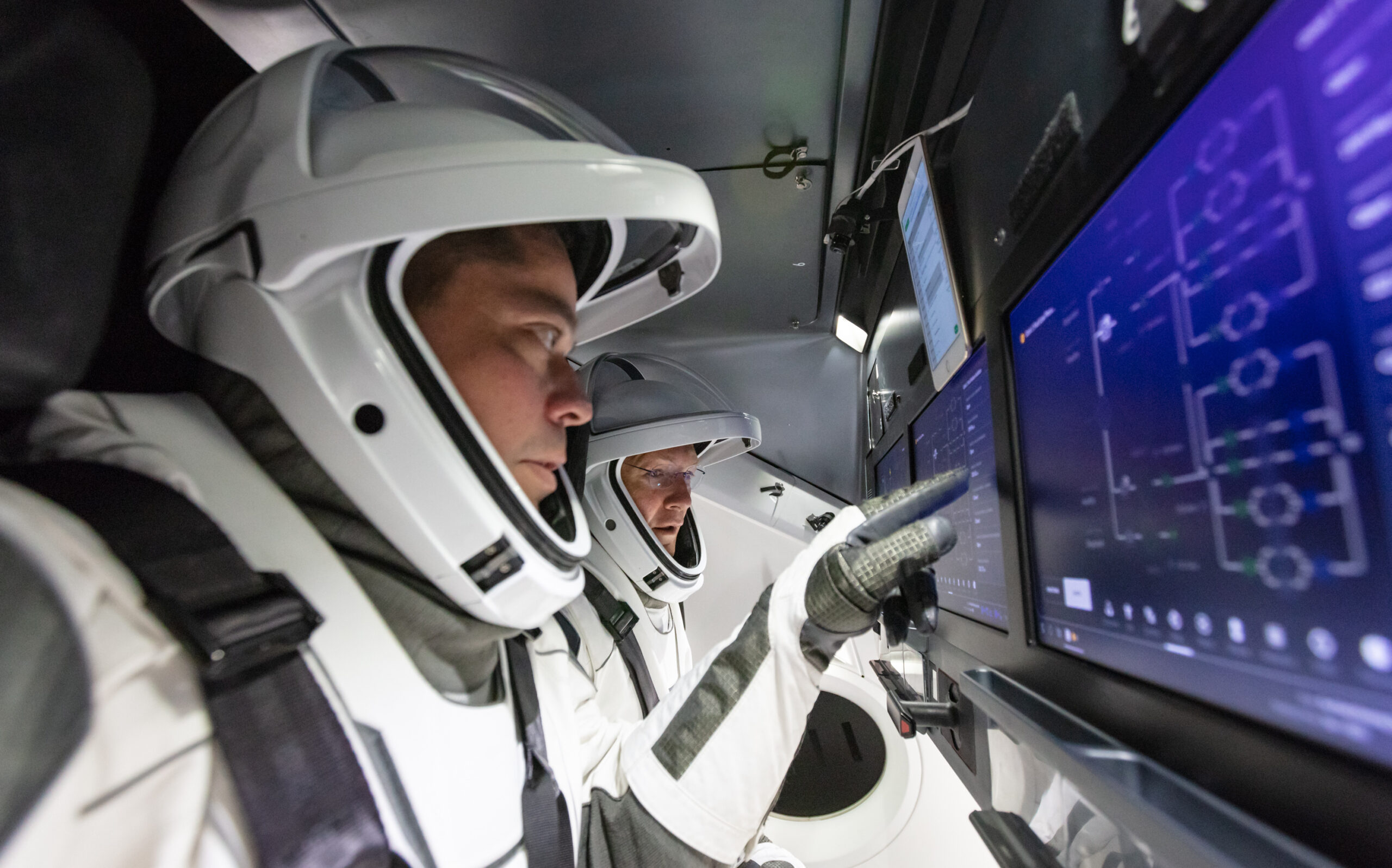
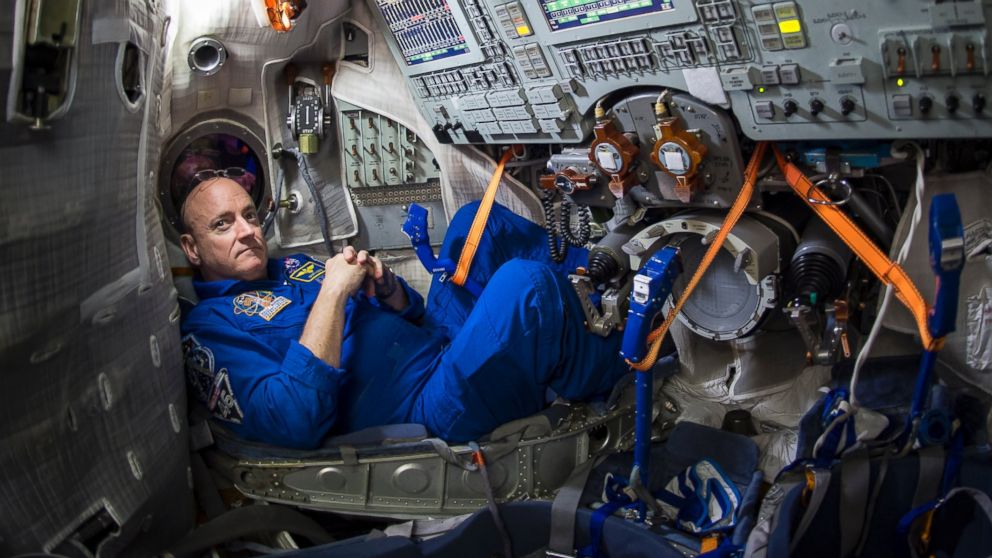
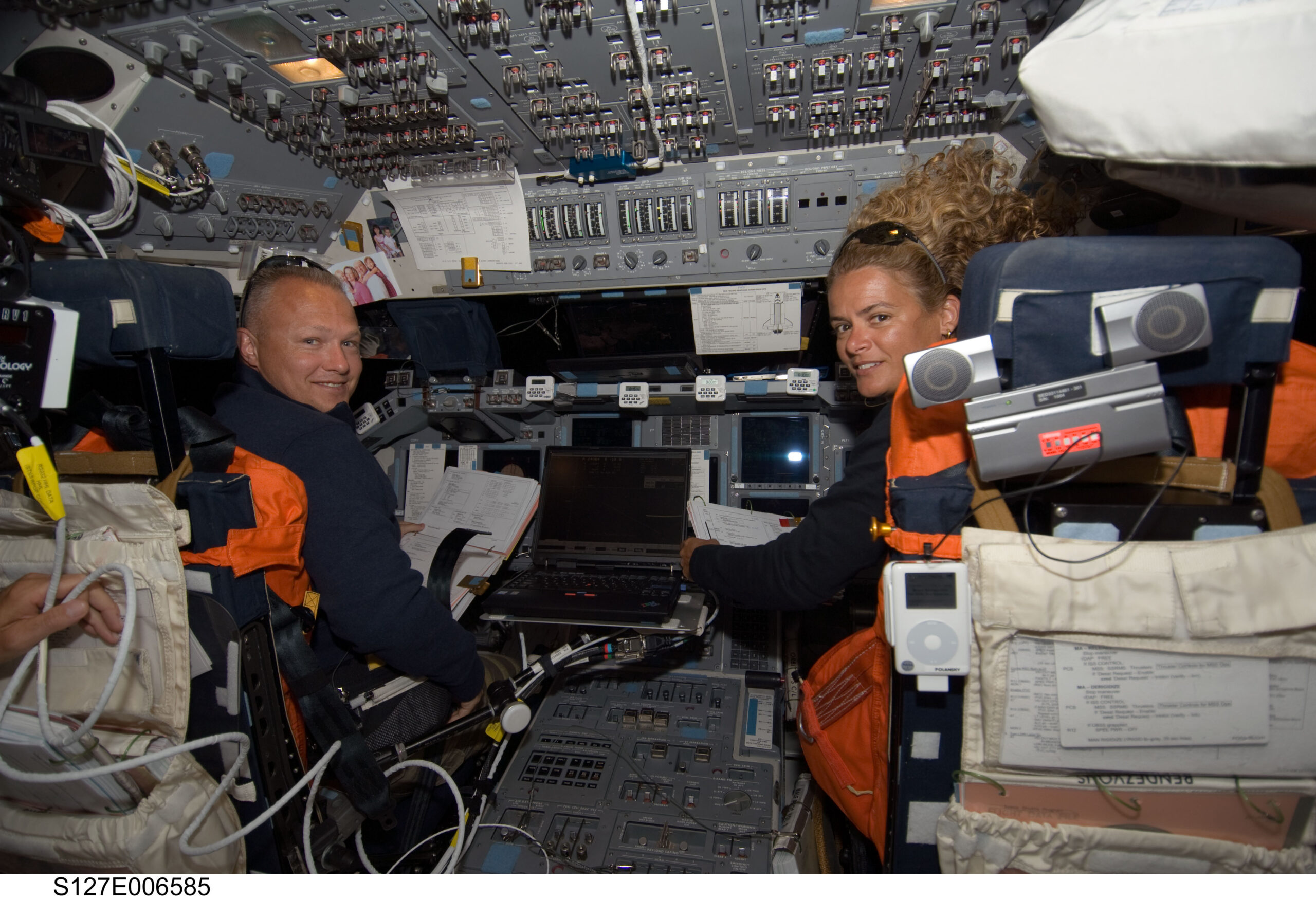
Flight Ready!
Technology advances at a higher rate than our ability to adapt. As we implement changes to inherently risky activities, concern rises regarding the functionality of these interfaces while considering the safety of the crew as top priority. During a news conference on May 25th, Deputy Director of NASA Johnson Space Center Flight Operations, Norm Knight, stated there were some initial concerns with making the Dragon 2 Capsule’s interfaces fully touchscreen:
These concerns didn’t stop efforts. Engineers were determined to create an innovative interface that was reliable and safe for future astronauts. The only way to alleviate these concerns is through appropriate testing and risk mitigation strategies. “There was a lot of testing and evaluation that went into the ergonomics of the placement of what’s on the displays, how those displays are presented to the crew,” Knight said. Considering all the safety risks due to the modifications in design, they engaged human factors specialists to assist with the design from the concept stage, throughout execution, and into flight ready certification. By using established human-centered design principles and standards, human factors specialists helped to bridge the gap between the new technology that was created and the fail safes that were necessary to ensure successful missions.
Keeping the Human in HCD
Human factors specialists use many techniques during the design process to ensure that the design allows for efficient and safe use. One of those techniques is human in the loop testing, which allows potential users, such as Astronauts Hurley and Behnken, to test the design at multiple stages and provide valuable feedback to improve design. User testing is vital to all design projects; critical when the environment is as unforgiving as space.
The Dragon 2 was designed strictly for launching crew into orbit, maneuvering to dock with the ISS, and returning to Earth. These low vibration activities mean that minimally critical controls can remain as physical buttons with all non-essential controls moved to the touchscreen displays. The ability to have multiple failsafe’s, physical and touchscreen controls, creates redundancy in safety measures, making the Dragon 2 Capsule reliable and safe.
Nothing Accidental in these Displays
We’ve all clicked that app on our phone when we never intended to or swiped when we meant to zoom. With these new interfaces, are we potentially putting crew in a position where they might accidentally (or inaccurately) activate a command within the vehicle? SpaceX planned for that, stating that the driving force behind the changes was safety, a core aspect of human-centered design. Overall, the design is based around a detailed understanding of crew tasks, capabilities, risks, situational awareness needs, and environmental conditions throughout flight.
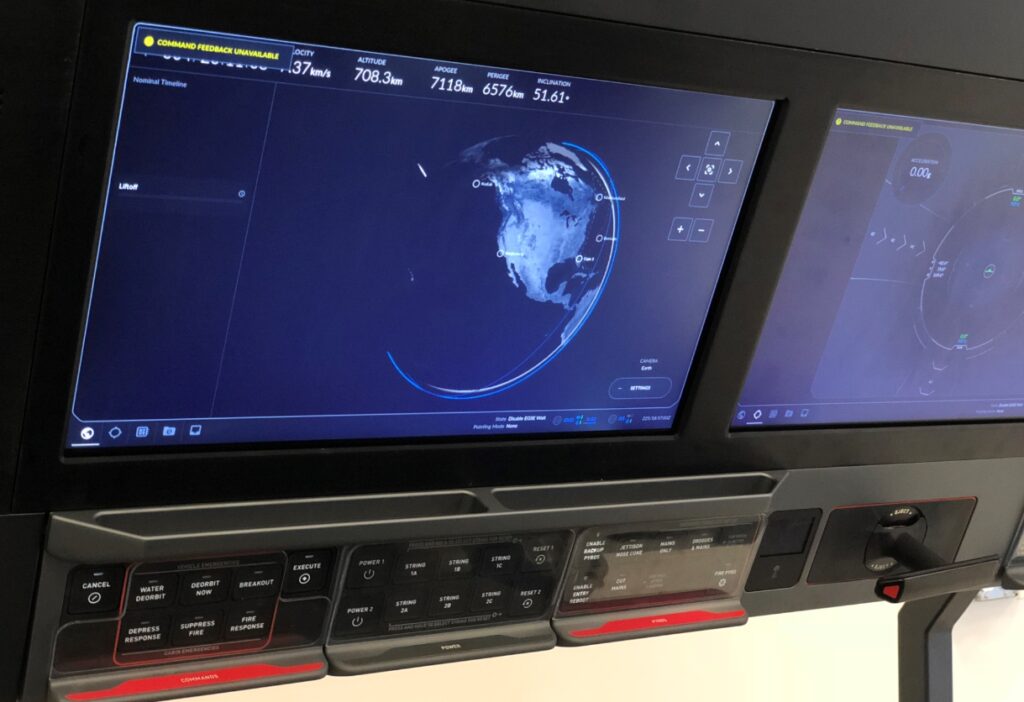
Hurley and Behnken worked with the design team and engineers to “refine the way that you interface with the touchscreen and the way your touch is registered on the display to be able to fly it cleanly and not make mistakes touching it” (Hurley).
Human safety has never been an option, it always has been, and will continue to be, mission critical. This is why human factors, at its core, is a critical aspect of any comprehensive safety program and risk mitigation strategy. As human factors professionals, what can we take away from this monumental shift that puts touchscreens as the main interface in such an extreme environment? It is through the implementation of Human-Centered Design principles that the Dragon 2 Capsule has become an exemplary piece of space flight machinery; from the inclusion of the user in the conception stage, to the security measures, to the contingency controls. This has surely become the standard for future Human-Centered Design integration with technology development.
